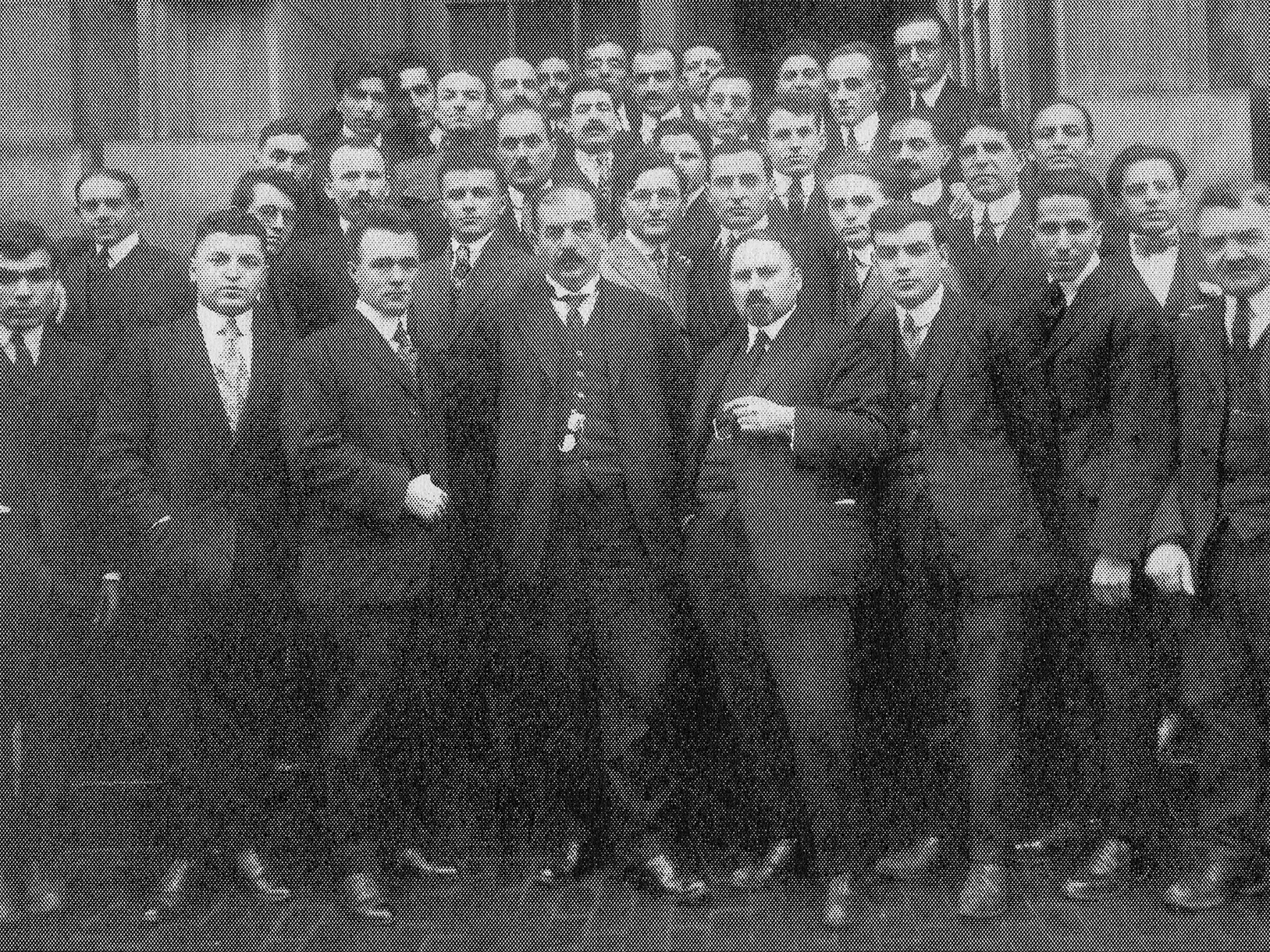
On April 25th, 2023, a monument dedicated to the Operation Nemesis terrorists was unveiled in Yerevan’s Ring Park. The ceremony was attended by many members of the public, as well as artists, academics and descendants of the Operation Nemesis terrorists.
The monument dedicated to the Operation Nemesis terrorists was designed by Kamo Areyan. Kamo Areyan is the former mayor of Yerevan. In a report published in Asbarez, Areyan claimed that “the country was covered in blood” in April 108 years ago to justify the monument[1]. This statement completely contradicts the facts. To recall briefly, a circular was issued on April 24th, 1915, which resulted in a number of arrests. In the circular, after it was understood that Armenian separatist organizations were preparing for a collective rebellion despite all warnings, the Commander-in-Chief of the Ottoman Army instructed the military units on 27 February 1915 that the weapons, bombs and some coded documents captured within Armenian organizations showed that they were preparing for a revolution, and for this reason, it was ordered that Armenian soldiers in the army should not be used in armed services, to be more careful everywhere and to take the necessary measures, but not to harm those among the Armenians who were loyal to the state[2]. As is known, the Law on Relocation and Resettlement was issued on May 27th, 1915. According to the Law, only Armenians in the war zone and along the supply routes were to be subjected to relocation and resettlement, the three major provinces of Istanbul, Edirne and Izmir were excluded from the scope of this law. It was even decided to introduce some exceptions with the circular dated August 28th, 1915, which was subsequently issued for the implementation of the law.
As part of this process, some officials were found to have mistreated the caravans. It is known that these individuals condoned extortion attempts and some of them caused deaths. The administration acted in a very sensitive manner regarding this issue and in 1916, 1647 people were brought to court. Of these people, 500 were sentenced to imprisonment, more than 60 to hard labor and 67 to death.
Operation Nemesis, carried out by the Dashnak terrorist organization, the Armenian Revolutionary Federation (ARF), was called the second period of Armenian terrorism and these “revenge” attacks were orchestrated to “punish” those responsible for the decisions taken on April 24th, 1915 and May 27th, 1915. Operation Nemesis is a terrorist act in the truest sense of the word. In February 2015, Syracuse University launched a digital and physical book titled “Sacred Justice.” The book was written by Marian Mesrobian MacCurdy, the granddaughter of Operation Nemesis member Aaron Sachaklian. In the promotional article, the members of Operation Nemesis are portrayed as heroes and their eternal hatred as a sacred oath. Aaron Sachaklian’s family knew him as a man who served for many years as the chief financial officer of the church he helped found; who, with his wife, provided housing for many Armenian families after World War II; who wrote countless letters on behalf of his people to governments, churches, and prominent leaders; and who wrote a play that was staged in Syracuse. Aaron Sachaklian served as the organization's finance and logistics officer[3]. Many years later, towards the end of his life, he bemoaned that “I could have done more[4].” His granddaughter then told the whole story as if it was a tale of heroism. Aaron Sachaklian, who died on August 5th, 1964, said, “I could have done more,” suggesting that he was lamenting his own inadequacy concerning the organization he was a part of. It is clear that terrorists show no signs of remorse today, as they did yesterday.
In his book on Operation Nemesis, Eric Boghosian quotes Louise Nalbandian’s book “The Armenian Revolutionary Federation: The Development of Armenian Political Parties Through The Nineteenth Century”, he writes, “In an 1892 publication, the ‘Program of the Armenian Revolutionary Federation,’ in which the goals and means of the organization are laid out, it is clearly stated that the organization would strive “to stimulate fighting to terrorize government officials, informers, traitors, usurers, and every kind of exploiter… to expose government establishments to looting and destruction[5].” By sharing this statement, Boghosian aimed to assign a different meaning to the concept of “terrorism”. Just as the expression “genocide,” which is a legal concept, was recognized by 33 parliaments despite the fact that the Armenian allegations were not recognized by a competent court, with the aforementioned and similar monuments, attempts are being made to establish the concept of “terrorism” is as a “just cause movement”. Through these and similar organizations, terrorists are being commemorated as heroes and legitimized. This is also seen in Boghosian’s book:
“With no recourse against government-sponsored violence, in the late nineteenth century, Armenians formed revolutionary societies, notably the Armenakan Party, the Hnchag (Bell) Party (or Hnchags), and the Hai Heghapokhakanneri Tashnagtsutiun (the Armenian Revolutionary Federation, or ARF, also known as the Tashnags). Emboldened by revolutionary activity in Russia, these organizations had committed themselves to education of the peasantry, agricultural reform, and the establishment of a constitutional and/or socialist government. They were also, by their own admission, terrorist[6].”
The book also includes a definition of “terror” in the notes section: “Though the terms ‘terror’ and ‘terrorist’ can be found throughout ARF literature from its earliest days, the leaders of the Tashnags and their fedayeen did not see ‘terror’ in terms of direct attacks on innocent civilians. Assassinations of officials and ‘traitors’ were the mainstay, though there could be exceptions, as seen in the paragraphs that follow[7].”
Boghosian’s book also includes the assassinations of Azerbaijani high-level state officials. On June 19th, 1920, Arshavir Shiragian and Aram Yerganian, who are portrayed as heroes in the book, assassinated the former Prime Minister of Azerbaijan, Fatali Khan Khoyski[8]. On March 15th, 1921, a few months after the release of Tehlirian, who killed Talat Pasha in Berlin, Misak Torlakian, with the help of Harutiun Harutiunian and Yervant Fundukian, shot and killed Behbud Khan Javanshir, the former interior minister of Azerbaijan, in front of the Pera Palace Hotel in Istanbul on July 18th, 1921[9].
Operation Nemesis did not only target Turks. Armenians also lost their lives as a result of the attacks of Operation Nemesis members. Among those who lost their lives was an Armenian named Harutiun Megerdichian. Megerdichian was murdered by Soghomon Tehlirian, the assassin of Talat Pasha, following him step by step[10]. The details of the murder are described in Boghosian’s book. There were other Armenians who were declared “traitors” by the murderers of Operation Nemesis. Vahe Ihsan (Yesayan) was murdered by Arshavir Shiragian for informing the Turkish police of groups preparing to revolt and for assisting in arrests as a result of the Circular of April 24th, 1915. The terrorist Shiragian, it will be recalled, had assassinated Sait Halim Pasha in Rome on December 6th, 1921 and Cemal Azmi Bey in Berlin on April 17th, 1922. Hmayag Aramiantz was also assassinated by Arshavir Shiragian with the help of Arshag Yezdanian[11].
Boghosian’s book, “Operation Nemesis,” contains blood-curdling sentences. In addition to praising terrorism in general and presenting the use of terrorism to instill fear in the masses as a heroic act, it is essentially a handbook for terrorism. For instance:
“‘My second bullet got Ihsan in the arm. When he realized that he would not be able to use his gun, he started to run. I fired two more bullets after him as I chased him. There was quite a commotion in the street. Pedestrians were screaming and trying to take cover, and from nearby windows people were throwing things at me—flowerpots, shoes, anything. But no one dared to get in my way or grab me. Ihsan fell; his head struck a stone. My third and fourth bullets had hit him, but he didn’t seem human. He was still alive. He got to his knees and tried to stand. We were both being struck by the various objects which people were throwing at us from the shelter of their homes. Taking advantage of the confusion, Ihsan managed to get his revolver out of his pocket. He started to take aim. I jumped on him and fired my last two bullets into his head. Then I started to run away. But I couldn’t leave. I had to turn back to make certain that he had stopped breathing. In my nervousness and because of my inexperience, I had done a “sloppy” job. His skull was shattered and his brains had splattered on the stones.’
Over the next few years, Shiragian would develop a more elegant killing technique[12].”
All the information given above and sourced from Armenian authors clearly demonstrates that Operation Nemesis was a terrorist activity. In this context, what Artyom Yerganian, a journalist and descendant of Aram Yerganian, one of the Nemesis terrorists, said at the so-called memorial event in Yerevan is astonishing. “Can you imagine what would have happened without Operation Nemesis?” he asked, to which he replied, “we would have been a sick nation suffering from psychological complications. I often compare them to psychiatrists. They made us feel worthy. These people are not terrorists, they are the executors of a just verdict by a legitimate court.” It is sad that Armenians admit that they resorted to terrorism to define their identity or to make themselves feel worthy. This in itself shows the amount of psychological scars they have inflicted upon themselves. Moreover, the fact that they believe that there is a court of law present gives an idea of their current psychological state.
All statements regarding the so-called monument in question are incompatible with historical facts and encourage violence, anger, hatred and separation. It is a step that does not contribute to and even undermines the normalization process Armenia is in with Turkey. We respectfully commemorate the diplomats and citizens we have lost due to terrorism and we bow before their cherished memories.
*Photograph: https://www.npr.org/2021/05/03/993128456/operation-nemesis
[1] “’Nemesis’ Monument Inaugurated in Yerevan,” Asbarez, asbarez.com, April 25, 2023, https://asbarez.com/nemesis-monument-inaugurated-in-yerevan/.
[2] “What Happened on 24 April 1915?,” Marmara Üniversitesi, Marmara.edu.tr, http://turksandarmenians.marmara.edu.tr/en/what-happened-on-24-april-1915/.
[3] Eric Boghosian, “The Assassination Plot That Avenged The Armenian Genocide – Operation Nemesis,” The Little, Brown: New York, April 2015, p. 263.
[4] Marian Mesrobian MacCurdy, “Sacred Justice – The Voices and Legacy of the Armenian Operation Nemesis,” Transaction Publishers: New Jersey, 2015, p. 83.
[5] Eric Boghosian, p. 57.
[6] Ibid. p. 50.
[7] Ibid. p. 318.
[8] Ibid. p. 247.
[9] Ibid. p. 241.
[10] Ibid. p. 132.
[11] Ibid. p. 244.
[12] Ibid. p. 246.
© 2009-2025 Center for Eurasian Studies (AVİM) All Rights Reserved
No comments yet.
-
 NEW LEADERS FOR THE EUROPEAN UNION HAVE BEEN APPOINTED
NEW LEADERS FOR THE EUROPEAN UNION HAVE BEEN APPOINTED
Hazel ÇAĞAN ELBİR 06.08.2019 -
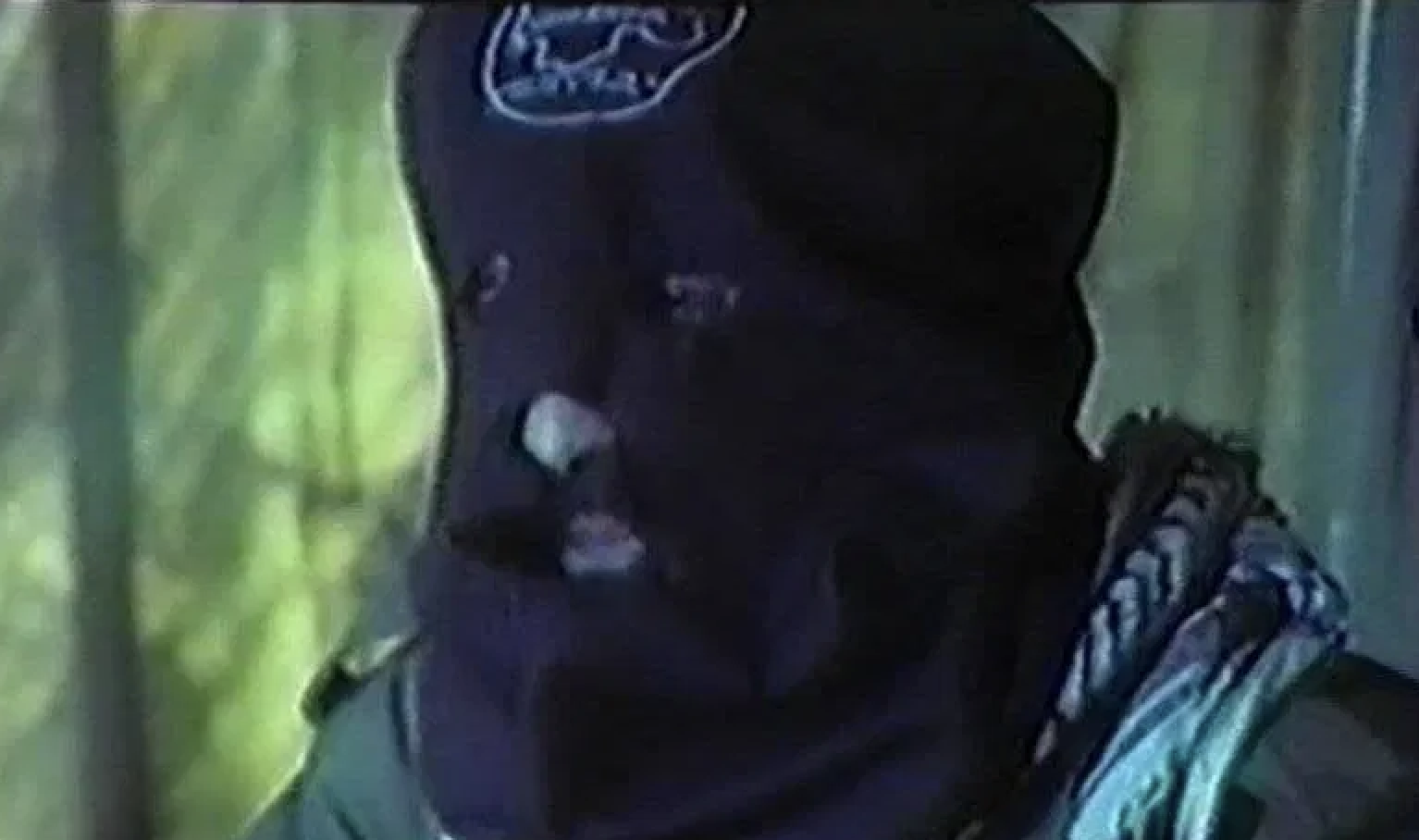 ARMENIAN TERRORISM BEGINS TO SHOW ITS FACE AGAIN
ARMENIAN TERRORISM BEGINS TO SHOW ITS FACE AGAIN
Hazel ÇAĞAN ELBİR 04.02.2021 -
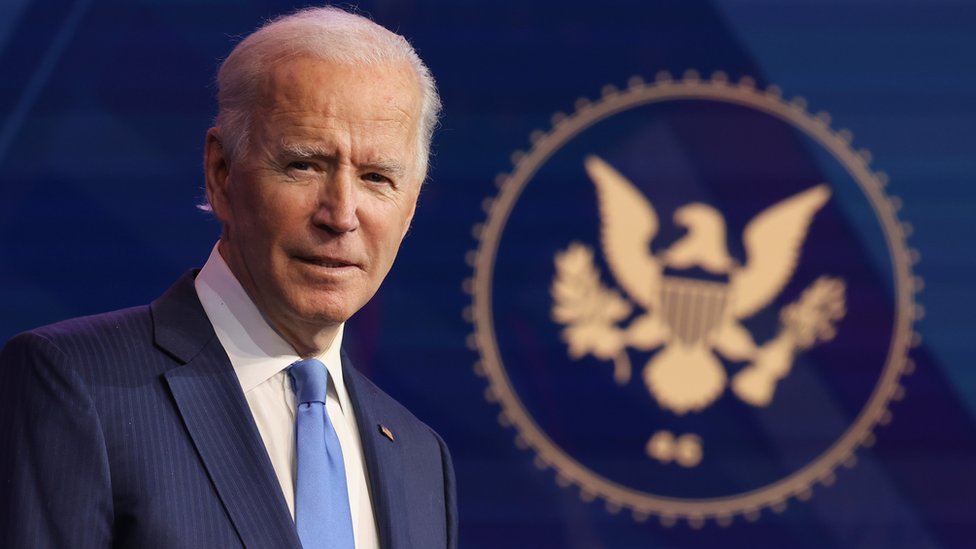 THE SASSOUNIAN QUESTION PRIOR TO 24 APRIL - THE US APPLIES DOUBLE STANDARDS
THE SASSOUNIAN QUESTION PRIOR TO 24 APRIL - THE US APPLIES DOUBLE STANDARDS
Hazel ÇAĞAN ELBİR 23.03.2021 -
 NO PAROLE FOR THE ASSASSIN OF TURKISH DIPLOMAT
NO PAROLE FOR THE ASSASSIN OF TURKISH DIPLOMAT
Hazel ÇAĞAN ELBİR 02.06.2020 -
 A MOVIE REVIEW: AURORA’S SUNRISE
A MOVIE REVIEW: AURORA’S SUNRISE
Hazel ÇAĞAN ELBİR 07.12.2023
-
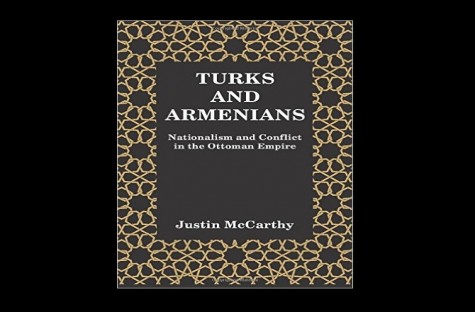 CHAPTER BY CHAPTER SYNOPSIS AND REVIEW OF TURKS AND ARMENIANS: NATIONALISM AND CONFLICT IN THE OTTOMAN EMPIRE BY JUSTIN MCCARTHY - 6
CHAPTER BY CHAPTER SYNOPSIS AND REVIEW OF TURKS AND ARMENIANS: NATIONALISM AND CONFLICT IN THE OTTOMAN EMPIRE BY JUSTIN MCCARTHY - 6
AVİM 22.10.2015 -
 THE “NEJDEHISM” REMAINS OFFICIAL IN ARMENIA
THE “NEJDEHISM” REMAINS OFFICIAL IN ARMENIA
Maxime GAUIN 30.10.2019 -
 THE RISE OF NATIONALISM IN EUROPE AND SOCIAL DEMOCRATS’ STRUGGLE FOR SURVIVAL
THE RISE OF NATIONALISM IN EUROPE AND SOCIAL DEMOCRATS’ STRUGGLE FOR SURVIVAL
Hazel ÇAĞAN ELBİR 08.02.2017 -
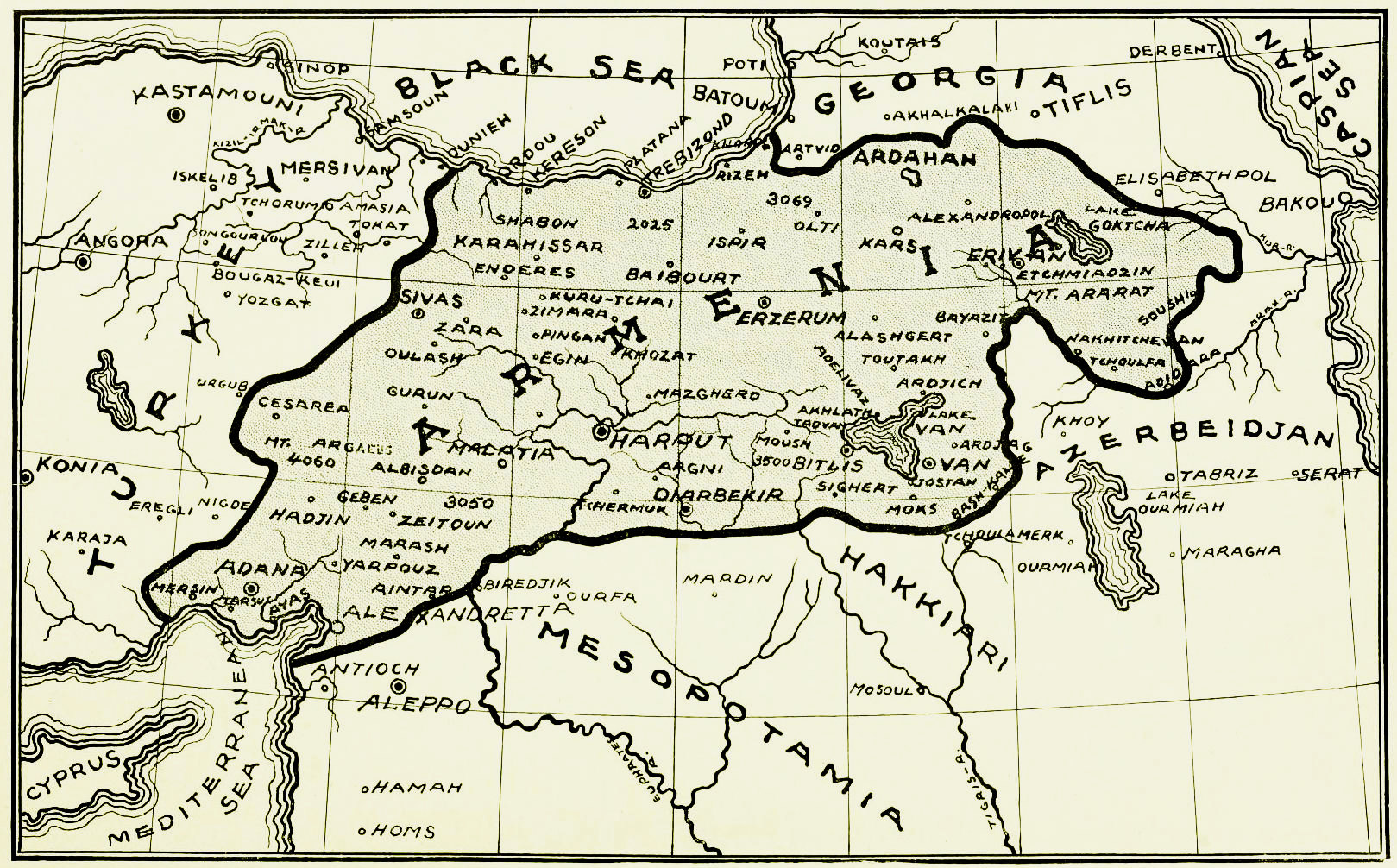 THE COLLAPSE OF DASHNAK ARMENIA IN 1920 AND THE DEBACLE OF NIKOL PASHINYAN’S REGIME IN 2020
THE COLLAPSE OF DASHNAK ARMENIA IN 1920 AND THE DEBACLE OF NIKOL PASHINYAN’S REGIME IN 2020
Maxime GAUIN 30.10.2020 -
 THE NEVER-ENDING DECLARATIONS THAT EXCUSE TERRORIST SASSOUNIAN
THE NEVER-ENDING DECLARATIONS THAT EXCUSE TERRORIST SASSOUNIAN
Hazel ÇAĞAN ELBİR 05.04.2021
-
25.01.2016
THE ARMENIAN QUESTION - BASIC KNOWLEDGE AND DOCUMENTATION -
12.06.2024
THE TRUTH WILL OUT -
27.03.2023
RADİKAL ERMENİ UNSURLARCA GERÇEKLEŞTİRİLEN MEZALİMLER VE VANDALİZM -
17.03.2023
PATRIOTISM PERVERTED -
23.02.2023
MEN ARE LIKE THAT -
03.02.2023
BAKÜ-TİFLİS-CEYHAN BORU HATTININ YAŞANAN TARİHİ -
16.12.2022
INTERNATIONAL SCHOLARS ON THE EVENTS OF 1915 -
07.12.2022
FAKE PHOTOS AND THE ARMENIAN PROPAGANDA -
07.12.2022
ERMENİ PROPAGANDASI VE SAHTE RESİMLER -
01.01.2022
A Letter From Japan - Strategically Mum: The Silence of the Armenians -
01.01.2022
Japonya'dan Bir Mektup - Stratejik Suskunluk: Ermenilerin Sessizliği -
03.06.2020
Anastas Mikoyan: Confessions of an Armenian Bolshevik -
08.04.2020
Sovyet Sonrası Ukrayna’da Devlet, Toplum ve Siyaset - Değişen Dinamikler, Dönüşen Kimlikler -
12.06.2018
Ermeni Sorunuyla İlgili İngiliz Belgeleri (1912-1923) - British Documents on Armenian Question (1912-1923) -
02.12.2016
Turkish-Russian Academics: A Historical Study on the Caucasus -
01.07.2016
Gürcistan'daki Müslüman Topluluklar: Azınlık Hakları, Kimlik, Siyaset -
10.03.2016
Armenian Diaspora: Diaspora, State and the Imagination of the Republic of Armenia -
24.01.2016
ERMENİ SORUNU - TEMEL BİLGİ VE BELGELER (2. BASKI)
-
AVİM Conference Hall 24.01.2023
CONFERENCE TITLED “HUNGARY’S PERSPECTIVES ON THE TURKIC WORLD"









